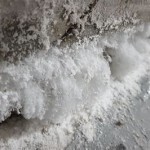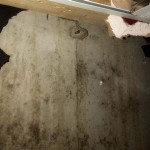How To Fix Cracked Concrete Basement Floor
Cracks in a concrete basement floor are a common issue for homeowners. They can be caused by a variety of factors, including settling foundations, hydrostatic pressure, shrinkage, and temperature fluctuations. While minor cracks may be primarily cosmetic concerns, larger cracks can indicate structural issues or allow water and radon gas to seep into the basement. This article will outline the steps involved in repairing cracks in a concrete basement floor.
Assessment and Preparation: Before beginning any repair work, the cracks should be thoroughly assessed. This includes measuring the width and depth of the cracks and determining the underlying cause. Hairline cracks (less than 1/16 inch wide) are generally cosmetic and can be filled with a concrete sealant. Wider cracks, especially those that are actively growing or showing signs of movement, may require more extensive repairs. The area around the crack should be cleaned of any loose debris, dust, or efflorescence using a wire brush, vacuum, or grinder.
Repairing Hairline Cracks: For hairline cracks, epoxy injection or concrete crack filler is typically sufficient. Epoxy injection involves injecting epoxy resin into the crack, where it expands and hardens, creating a strong bond. Concrete crack filler is applied to the surface of the crack and troweled smooth. Both methods are effective for sealing hairline cracks and preventing water infiltration. Follow manufacturer instructions carefully for proper application and curing time.
Repairing Wider Cracks: Cracks wider than 1/16 inch often require more substantial repair methods. One common method is to widen the crack slightly using a chisel and hammer or an angle grinder to create a V-shaped groove. This groove provides a larger surface area for the patching material to bond to. The groove should then be cleaned thoroughly to remove any loose debris. A concrete patching compound or epoxy mortar can then be applied to the groove and troweled smooth.
Using Epoxy Mortar: Epoxy mortar is a high-strength repair material ideal for wider cracks and structural repairs. It is composed of epoxy resin and hardener mixed with fine aggregate. Epoxy mortar provides excellent adhesion and durability, making it suitable for repairing cracks subject to movement or hydrostatic pressure. It is important to follow the manufacturer's mixing and application instructions carefully. Epoxy mortar typically requires a longer curing time than concrete patching compounds.
Using Concrete Patching Compound: Concrete patching compounds are pre-mixed or dry-mix materials designed for patching concrete surfaces. They are generally easier to apply than epoxy mortar and are suitable for non-structural cracks. Flexible patching compounds are available for cracks subject to minor movement. When choosing a concrete patching compound, ensure it is suitable for use in basements and compatible with the existing concrete. Follow the manufacturer's instructions for proper mixing, application, and curing time.
Addressing Underlying Issues: While patching the cracks addresses the immediate problem, it's essential to address any underlying issues that may have caused the cracking in the first place. If the cracks are due to settling foundations, professional foundation repair may be necessary. If hydrostatic pressure is the culprit, improving exterior drainage, installing a sump pump, or waterproofing the basement walls can help prevent future cracking.
Controlling Moisture: Moisture is a significant contributor to concrete deterioration and cracking. Ensuring proper drainage around the foundation and addressing any leaks or water infiltration issues can help prevent future cracking. Properly functioning gutters and downspouts are essential for directing water away from the foundation. Grading the soil around the foundation to slope away from the house can also help prevent water from accumulating against the foundation walls.
Expansion Joints: In some cases, particularly for larger cracks or cracks that reappear after repair, installing expansion joints may be necessary. Expansion joints are designed to accommodate movement in the concrete slab, preventing future cracking. These joints are typically filled with a flexible sealant that allows for expansion and contraction.
Professional Assistance: For large cracks, structural damage, or recurring cracks, consulting with a qualified structural engineer or foundation repair specialist is recommended. They can assess the situation, determine the underlying cause of the cracking, and recommend the most appropriate repair solution. Attempting to repair significant structural damage without professional assistance can be dangerous and may exacerbate the problem.
Preventing Future Cracks: Regular maintenance and preventative measures can help prevent future cracks in the basement floor. Maintaining proper drainage around the foundation, controlling moisture levels in the basement, and addressing any structural issues promptly can significantly reduce the risk of cracking. Periodically inspecting the basement floor for signs of cracking and addressing any minor cracks as soon as they appear can prevent them from becoming larger problems.

Causes Of Basement Floor Cracks And What To Do About Them News Events For Systems Inc

Foundation Floor Crack Repair Crackx

Concrete Floor Crack Repair Step 1 Exposing Fresh

Cracks In Basement Floor Signs Of Foundation Problems

Concrete Basement Cellar Floor Crack Repair In Worcester Ma

How To Fix Cracks Crumbles And Breaks In Concrete Dap Global

Crackweld Floor Repair Kit 4 Pack Radonseal

How To Repair Concrete Cracks In A Floor Baileylineroad

How To Fix Cracked Concrete Putting Two Methods The Test Renee Renovates

Is That Crack In The Basement Floor A Structural Problem Safe Harbor Inspections
Related Posts







